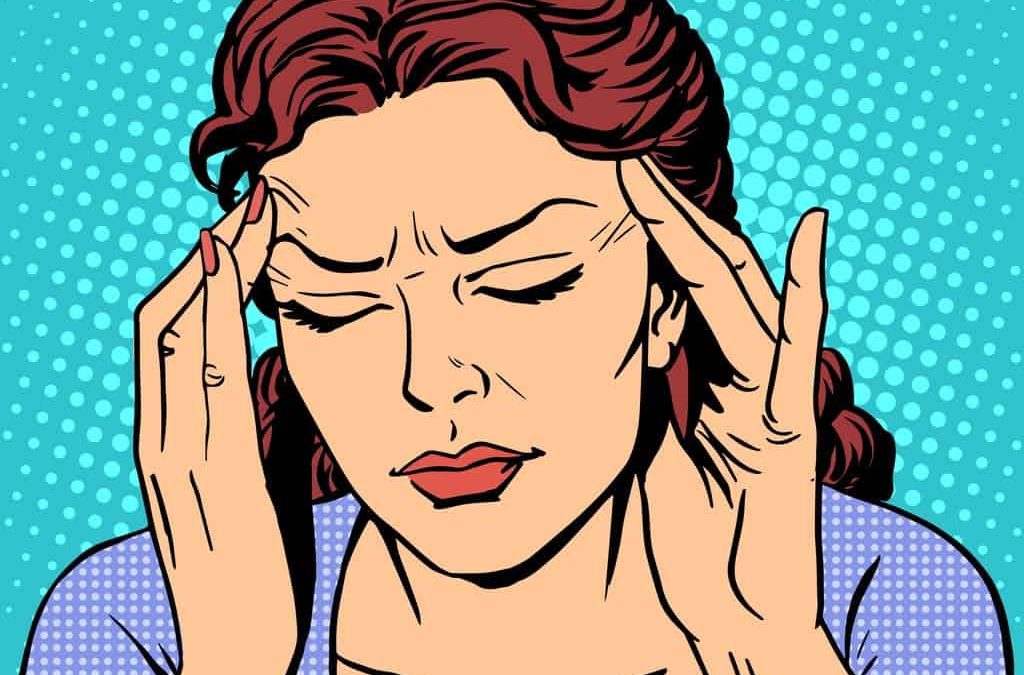Quick-Scroll Links
These quick-scroll links will make it easy for you to find something specific relating to barometric pressure headaches.
What are the symptoms of barometric pressure headaches?
Treatment & prevention of barometric pressure headaches.
Remedies — Western approaches.
Remedies — Eastern approaches.
Weather gadgets you can use to help predict barometric pressure headaches.
The Short Version:
Barometric pressure headaches are usually caused by a change in pressure. Most of the migraines associated with barometric pressure happen when air pressure drops. That often occurs when:
- You travel by airplane
- When the weather changes from “nice weather” to “bad weather”.
- “Nice weather” is associated with clear skies and calm conditions. “Bad weather” is associated with cloudy skies, windy conditions, wet weather, and colder temperatures.
What Can You Do To Alleviate Barometric Pressure Headaches?
- Stay hydrated; also avoid diuretics.
- Use OTC (over-the-counter) medicine.
- Keep a one-month journal of your symptoms to present to your doctor so he can better asses your condition.
These are just a few common sense recommendations. Read on to learn more detail about barometric pressure headaches.
Introduction
After reading this post, you’ll have a better understanding of barometric pressure headaches and what causes them. Furthermore, you’ll find out what you can do to prevent or solve them.
Yearly, around 40 million Americans complain of headaches or migraines. Among a variety of reasons such as stress, food, allergies, and noise, a vast majority refer to the weather as the cause. Low atmospheric pressure particularly, is the most common culprit, however, extreme heat or cold, heavy dust and smoke have all been cited.
The most common complaints of barometric pressure headaches are associated with two factors:
1. Headaches related to weather – caused by changes in atmospheric pressure.
2. Airplane travel headaches caused by changes in altitude. They can happen at take-off or landing.
What Is Barometric Pressure?
Barometric pressure, also known as atmospheric pressure, is the weight of the air surrounding us.
It is also defined as:
The force per unit area exerted by the atmosphere at any given point.
High barometric pressure is generally associated with bright sunny weather and few headaches.
Low pressure is associated with clouds and moisture. This dull, dreary, and ominous outlook can easily be associated with barometric pressure headaches.
How Do Barometric Pressure Changes Cause Headaches?
There are many theories surrounding how changes in atmospheric pressure create headaches. One of these is that pain may be a protective or defensive response to adverse weather. Weather headaches or migraines occur in extreme heat or cold and when there are large swings in weather patterns. This includes changes in barometric pressure which cause headaches.
Another common theory around barometric pressure headaches revolves around the sinuses within our facial bones. As these are full of air, any changes to the pressure of the air around us will impact the pressure within these sinuses. This is also true for the structures and chambers of the inner ear and the air within our cranial bones.
You can now see how barometric pressure headaches are created during take-off and landing when flying.
A Japanese study in 2015 found that even slight fluctuations in air pressure can trigger headaches and migraines in chronic sufferers.
What Are The Symptoms Of Barometric Pressure Headaches?
How the headaches feel:
- Headaches can be one-sided (unilateral) but typically involve both sides of the head (bilateral).
- Pain is associated with a tight band of pressure that moves slowly around your head.
- Commonly localized in the forehead and nasal bridge region, sometimes ppin is felt in the back and lower rear (occipital) region of the head.
Most common associated symptoms barometric pressure headaches:
- Dizziness
- Nausea
- Anorexia
- Shortness of breath
- Sleep issues
- Increased fatigue
- Flare-ups of rheumatic ailments like arthritis and joint pain
- Low back pain
- Mood changes
Most severe associated symptoms of barometric pressure headaches:
- Periodic, severe, and debilitating headaches. Typically lasting 24 hrs, but that can last for up to 3 days.
- Sharp, throbbing unilateral pain.
- Intense pain around the temples is typical; may also affect the forehead, eyes, ears, or back of the head.
- Altered perception.
- Speech impairment.
- Exaggerated sensitivity to sound, light, or smell.
- Waves of throbbing or pulsing pain that may be synchronized with the heartbeat. Pain is caused by the stretching of blood vessels each time the heart pulses.
- Nausea, abdominal pain, and vomiting.
- Stomach pain sometimes accompanied by diarrhea.
- Alterations in mood or emotional upheavals, like depression or anxiety.
- An “aura” is a set of symptoms that most notably includes a halo of light around objects. The aura may be accompanied by visual distortions, pressure waves, tingling, and/or numbness in the face, head, or extremities. In some cases, it precedes a migraine attack. We can say that people who experience auras are like the proverbial canary in the coal mine: they sense the oncoming danger before it actually arrives.
Who Suffers From Barometric Pressure Headaches?
Headache statistics from various studies reveal that roughly 15% of adults suffer from severe headaches or migraines. Also, over 50% of those sufferers have barometric pressure migraines. In fact, weather conditions (notably barometric pressure) are considered to be the second or third most common trigger.
Statistically, the headaches caused by changes in barometric pressure happen mostly for women aged 25 and 55. Migraines are more common among women, often run in families, and typically occur once or twice a month. So, often more women than men suffer from barometric pressure headaches.
However, headaches caused by air travel could happen to anyone, regardless of sex or age.
What Are The Causes?
As explained previously, a change in atmospheric pressure related to either weather or elevation appears to be a common cause. Other factors may include extreme heat or cold, dust or smoke, and even changes in temperature or humidity.
Is it the increase or the decrease in barometric pressure that causes headaches?
Some studies have found that most headaches occurred when barometric pressure decreased. However, this is not true in all cases. As with anything, there are many variations and some individuals are more prone to headaches as pressure increases.
In fact, one study found that one migraine may even occur the day following exposure to reduced barometric pressure.
Needless to say, in some people, changes to weather and particularly barometric pressure may create headaches or migraines.
Treatment And Prevention Of Barometric Pressure Headaches
How to deal with Barometric Pressure Headaches when Traveling by Air?
If you have ever flown in an airplane, you know what a sudden change in barometric pressure feels like. As the plane accelerates, the air pressure changes quickly, and you may experience a “popping” or pressure in your ears. This can be quite painful.
The discomfort is caused when there is a disparity between the external air pressure (in the cabin) and the internal air pressure of your ear chambers.
We suggest wearing specialized earplugs to lessen or even avoid this. You don’t have to wear earplugs for the entire flight! Simply pop them in just before take-off and again before the plane lands. Just be aware of the captains’ announcements and install your earplugs, preferably 20 minutes to half an hour before landing.
Drink plenty of water before, during, and after your flight! Why? Lower oxygen and dry air within the airplane cause dehydration, and dehydration can, in turn, mean headaches. Airlines always provide free water but we suggest you carry some on with you to keep hydrated.
A very effective solution that will also help prevent dehydration is to use a hydration supplement. Simply take one tablet and throw it in your water glass or bottle to carry on with you. Not only are you staying hydrated, but you are also getting some terrific electrolytes.
Stay away from alcohol and coffee. Both of these are diuretics – meaning they deplete your body of water. However, you can have a coffee and/or a drink before or after your flight – we’re not totally boring!
Sinuses And Barometric Pressure
As stated earlier, barometric pressure can affect your sinuses, resulting in headaches. It happens both when pressure changes from high to low and low to high.
You can feel this most when you travel by air. Because our sinuses are filled with air, any change in barometric pressure can affect them.
Why Barometric Pressure Changes Cause Headaches
When the inward pressure and the outward pressure are not balanced – the higher pressure inside the sinuses causes them to distend. This is especially true in people who suffer from nasal congestion.
Depending on how quickly the pressure change occurs and the intensity, the sinuses can be negatively impacted. This may cause persistent pain and headaches. This process commonly results in what is known as a low barometric pressure headache.
On the other hand, increasing barometric pressure may cause dilation of blood vessels and abnormal flow of blood to the brain. This too may increase the risk of high barometric pressure headaches. The sensitivity to pain and the severity of pain that people experience with changes in barometric pressure varies considerably between people.
The most violent headaches tend to happen when you fly. Why? The very sudden barometric pressure changes that occur during take-off and landing affect the air in your sinuses.
Therefore, you need to consider these when you fly:
# Avoid flying if you have flu. Your nose might be stuffy, and the pain you’ll experience might be very severe. If you must fly make sure you take cold & flu-relieving medication.
# During the flight, use a nasal decongestant.
# It also helps (especially for kids) to use chewing gum. Chewing helps relieve the pressure from your sinuses and alleviates headaches. It is a simple solution but works most times.
Barometric Pressure Headaches Caused By Changes In Weather – Western And Eastern/Alternative Approaches
Remember that atmospheric pressure drops from high to low when the weather changes from “nice weather” to “bad weather.”
Western approaches
The Western medicine approach to treating barometric headaches and migraines typically advocates using over-the-counter medications such as the following:
- Non-steroidal anti-inflammatory medications (NSAIDs)
- Over-the-counter pain relievers such as Tylenol or Advil
- Generic medications developed specifically for migraines
- Anti-nausea products
- Analgesic products, especially creams containing capsaicin
- To treat acute migraine headaches that do not respond to OTC remedies, you may want to consult a doctor about taking prescription medications.
Remember to discuss with your doctor to get a more effective solution, such as prescribed medication.
Non-medicinal approaches to managing headaches may also help reduce the symptoms and may lessen the time they last. You may want to try the following barometric pressure headaches home remedies:
- Apply a wrapped ice pack or pad to the painful areas of the head. You can use disposable ice packs.
- Try to relax and breathe through the pain, remembering it will pass eventually.
- Avoid known triggers like caffeine, alcohol, sugar, and trans fats.
- Reduce excessive physical activity or exertion.
- Take a warm, relaxing bath or shower.
- Avoid noisy or brightly lit environments. Use a sleeping mask if possible.
Eastern/Alternative Approaches
Many people have opted to use Eastern or “alternative” therapies to treat the causes and symptoms of barometric pressure headaches.

The following are various approaches, some of them ancient, that are known to help reduce the frequency and intensity of headaches/migraines in general. This includes those horrible barometric pressure headaches.
- Herbal remedies
- Acupuncture
- Pressure point and acupressure therapy
- Massage therapy
- Music therapy
- Yoga and Meditation
- Ionizers
- Humidifiers and dehumidifiers. Be aware of adding more moisture to the air if you are living in a humid place.
- Steamers relax muscles and clear sinuses
- Nasal irrigation, such as the Indian Neti pot. This device uses salt water to clean and flush away nasal congestion. It will help to reduce or eliminate pressure imbalances that contribute to headaches. Be sure to follow the FDA instructions when using a Neti pot as misuse of this device can be dangerous.
Each of the above approaches is a research project in itself, which goes beyond the scope of this article. Still, you would be wise to investigate several of them to help relieve barometric pressure headaches.
You may also want to combine an Eastern approach with Western medicine. This strategy has proven to be very useful for some people who struggle to control their headaches.
As the old saying goes, “An ounce of prevention is worth a pound of cure.” So, let’s look at some tactics you can use to prevent barometric pressure headaches.
Weather Instruments And Tools You Can Use To Predict Barometric Pressure Headaches
The best way to prevent a barometric pressure headache is to acquaint yourself with your own unique headache patterns. Keep a headache diary for one month before talking to your physician.
Besides getting your thoughts in order and helping you think clearly keeping a journal will help you:
- Determine whether you are barometric pressure sensitive.
- The degree of your sensitivity.
- Identify the precise weather or altitude conditions that trigger your headaches.
- To help you keep your diary, you may want to buy a barometric pressure instrument. This is also known as a barometer, which monitors changes in barometric pressure. They are inexpensive and readily available online and in-home goods stores.
The average amount of humidity at your home should be 40% to 50% – and you can read that with your hygrometer.
Other helpful Tools & Gadgets…
- Hygrometer (to measure humidity)
- Thermometer (to measure temperature)
- Altimeter (to measure altitude)
- If you are a weather enthusiast, you can buy these as single instruments. However, if you want to minimize the number of tools, just buy a combination package. These include digital weather stations or even handy wrist devices that go anywhere with you. You can read more in our recommendations for the best weather stations.
- Consult AccuWeather.com, which offers a Migraine Headache Forecast for your geographic location.
Regardless of the techniques, or tools and gadgets you use to alleviate the symptoms, an important factor is to develop good essential healthcare habits:
Get enough sleep every night.
Exercise most days of the week, whenever possible.
Avoid sources of stress.
Eat a balanced diet.
Did we miss anything?
Now we’d like to hear from you. What are the issues you experience when the barometric pressure changes?
Have you tried any of the solutions presented in this article?
If not, which solution from today’s post are you going to try first?
Or maybe we didn’t mention one of your favorite solutions.
Either way, let us know by leaving a comment below. We can deal with both praise and criticism 😉




Good article thank you…..very much a problem for me. I live in San Deigo County, CA
Thanks Bonita Knudsen. Glad to know you find this article helpful. We suggest you carry a portable barometer with you so you can keep track of the pressure.
Thank you for this article! I am extremely sensitive to barometric pressure changes. This has helped my family understand so much more. Now who’s going to make me a pressurized helmet? Ha
Hi everyone,I also suffer from migraine symptoms plus tingling sensation in my hands feet,it’s awful,as soon as the weather comes good,it fades away,this is an interesting read,I feel better knowing I’m not alone..Ann Australia
very thorough article – I had to laugh when I read to avoid positive stress. I use a Neti pot. I think it helps. I live at 2,000 ft up in the Pocono Mountains. What do you think of the Bamboo Charcoal bags you put around the house?
Mind has figuratively been blown. Thanks so much for all this information. After doing the circuit between internist, ear nose throat and neurologist, I’m positive that this is my answer after a year plus of inconclusive testing.
Hi Elisa,
Hope you are healthy and doing well. I am a product design student and I am researching Barometric Pressure headaches/ migraines as well as other weather-related symptoms for my senior project. I would love to have an interview with you to inform my project further.
Erin Jones
Hi Elisa,
Hope you are healthy and doing well. I am a product design student and I am researching Barometric Pressure headaches/ migraines as well as other weather-related symptoms for my senior project. I would love to have an interview with you to inform my project further.
Erin Jones
Thankyou , I have suffered with many problems due to BAROMETRIC PRESSURE over the years and was told by doctors that although the symptoms were very real , they were not connected to the weather. Thought I was going mad un till recently , now it is recognised it has helped hugely. Mine started mildly at about 13yrs old and is now Chronic at 53 hrs old, my Mother also has this and my Daughter is starting to show signs. Your article is very , very helpful and will help a lot of people . Sincerely Julia
Thank you for your feedback. Barometric pressure headaches affect many people so we are glad that this has helped you.
Low pressure really affect me. Monster headache. Nothing relieves it. I treat the symptoms with stronger prescription meds because nothing else works. I just have to tough it out until the pressure starts back up. My headaches/ migraines are everyday and I wake up with them. No answers. No preventatives work. My life is a living hell no st times.
Your article has been most helpful. I suffered from migraine headaches for years which are now under control. I think barometric headaches were in the mix. Prior to reading this article I realized that they occurred with weather changes. But this put it all in perspective and helps to deal with them. I have sent this article to others whom I know who also suffer, they are very grateful.
Before a storm arrives friends will call to ask me what the weather is “telling me”. I feel like the “groundhog” prognosticator” HaHa